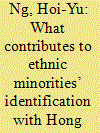| Srl | Item |
| 1 |
ID:
190221


|
|
|
|
|
| Summary/Abstract |
Available essays on Pashtunwali describe this system of customary laws and ethics for the most part as a static model of ideal conduct, without a diachronic perspective. Offering a historical approach to Pashtunwali, this article introduces and analyzes fragmentary data on the nənawāte custom from early modern Pashto sources—historiographical narratives of the Khatak chieftains in the Tarikh-i Murassaʿ (finished 1724) and the romantic poem Adam Khan aw Durkhaney (1706/7). Recorded cases of resorting to nənawāte, considered among the main pillars of Pashtunwali but still variously interpreted, prove that this is a complex legal custom based on the right to appeal for protection, mediation, and reconciliation. As a common means of dispute settlement, nənawāte originates with a binding request for help and favor in a conflict situation. The discussion of nənawāte is preceded by a brief overview of the existing scholarly definitions of Pashtunwali, underscoring its emic perception as an ethnic identity marker.
|
|
|
|
|
|
|
|
|
|
|
|
|
|
|
|
| 2 |
ID:
166627


|
|
|
|
|
| Summary/Abstract |
The context of Hong Kong has not always been favourable for the integration of ethnic minorities, who face various difficulties in education, employment, and daily life. Research, however, has shown that many minorities, particularly the youth, have developed a fair sense of belonging to the city. To explore this puzzle, this study conducted semi-structured interviews with 20 South Asian and Filipino youth and identified four main factors that may be associated with their local identification. They are (1) experiencing less discrimination, (2) achieving a higher level of sociocultural adaptation, (3) having an inclusive conception of Hong Kong identity, and (4) claiming to have received more social benefits. The findings suggest that the context of Hong Kong is not entirely detrimental for ethnic minorities to develop a local identification. Ethnic minorities themselves are also active agents in the construction of identity. Theoretical and policy implications of the findings are discussed.
|
|
|
|
|
|
|
|
|
|
|
|
|
|
|
|